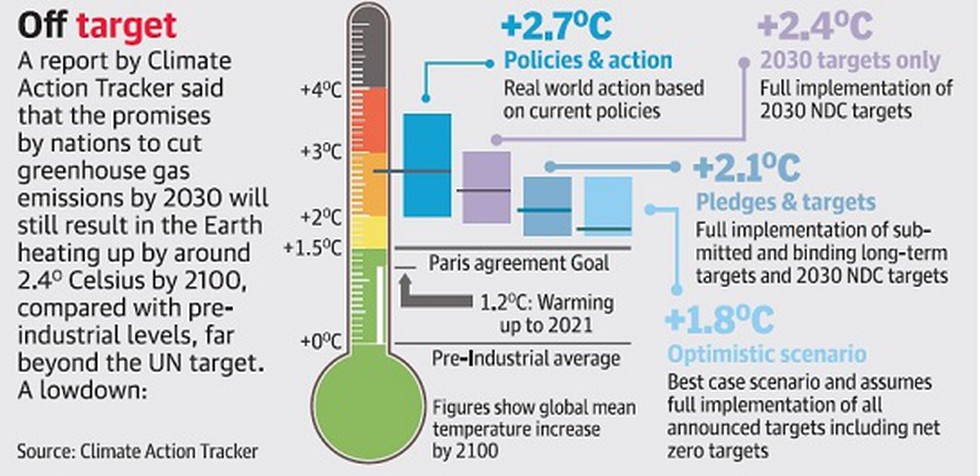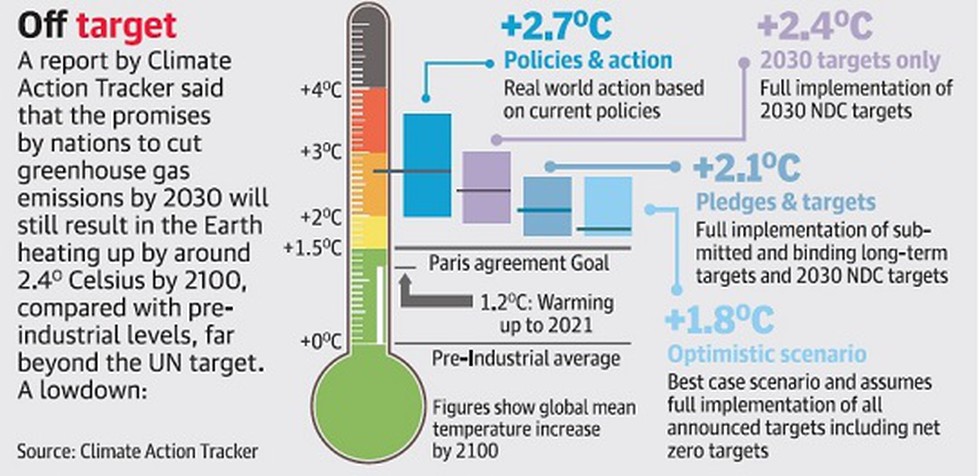CURRENT AFFAIRS
Get the most updated and recent current affair content on Padhaikaro.com
GLASGOW AGREEMENT
- Vaid's ICS, Lucknow
- 11, Apr 2022

Why in News?
UN climate talks in Scotland has concluded with a global agreement aimed at keeping alive hopes of capping global warming at 1.5 degrees Celsius, and so maintain a realistic shot at saving the world from catastrophic climate change.

About:
- The “Glasgow climate pact” was adopted despite a last-minute intervention by India to water down language on “phasing out” coal to merely “phasing down”.
- The pledges on emissions cuts made at the two-week Cop26 summit in Glasgow fell well short of those required to limit temperatures to 1.5C, according to scientific advice. Instead, all countries have agreed to return to the negotiating table next year, at a conference in Egypt, and re-examine their national plans, with a view to increasing their ambition on cuts.
- One of the fiercest disagreements in the final hours was over the wording of an intention to abandon coal, which was watered down from a “phase-out” to a “phase-down”. Yet it marked the first time that such a resolution had been made under the UN climate process.
- Poor countries were also left frustrated at the pact, which they said did not address their concerns about “loss and damage”. This refers to the destruction caused by extreme weather, which is now hitting vulnerable countries far harder and more frequently than had been predicted.
FACTS FOR PRELIMS:
Omicron:
The World Health Organization (WHO) classified a new variant of SARS-CoV-2, currently circulating in South Africa, as a ‘variant of concern’. It also named it Omicron.
- The Network for Genomics Surveillance in South Africa (NGS-SA) had identified the variant. It had detected a group of related SARS-CoV-2 viruses, which belong to a lineage named B.1.1.529.
- Early indications are that this variant is possibly even more transmissible than the highly infectious Delta variant, and that current vaccines may be less effective against it.
- From what is known currently, B.1.1.529 has multiple spike protein mutations, and preliminary analysis suggests it is highly infectious.
- The has “very unusual constellations of mutations” — with 30 in the region that encodes the spike protein, which is responsible for the virus’s entry in human cells.